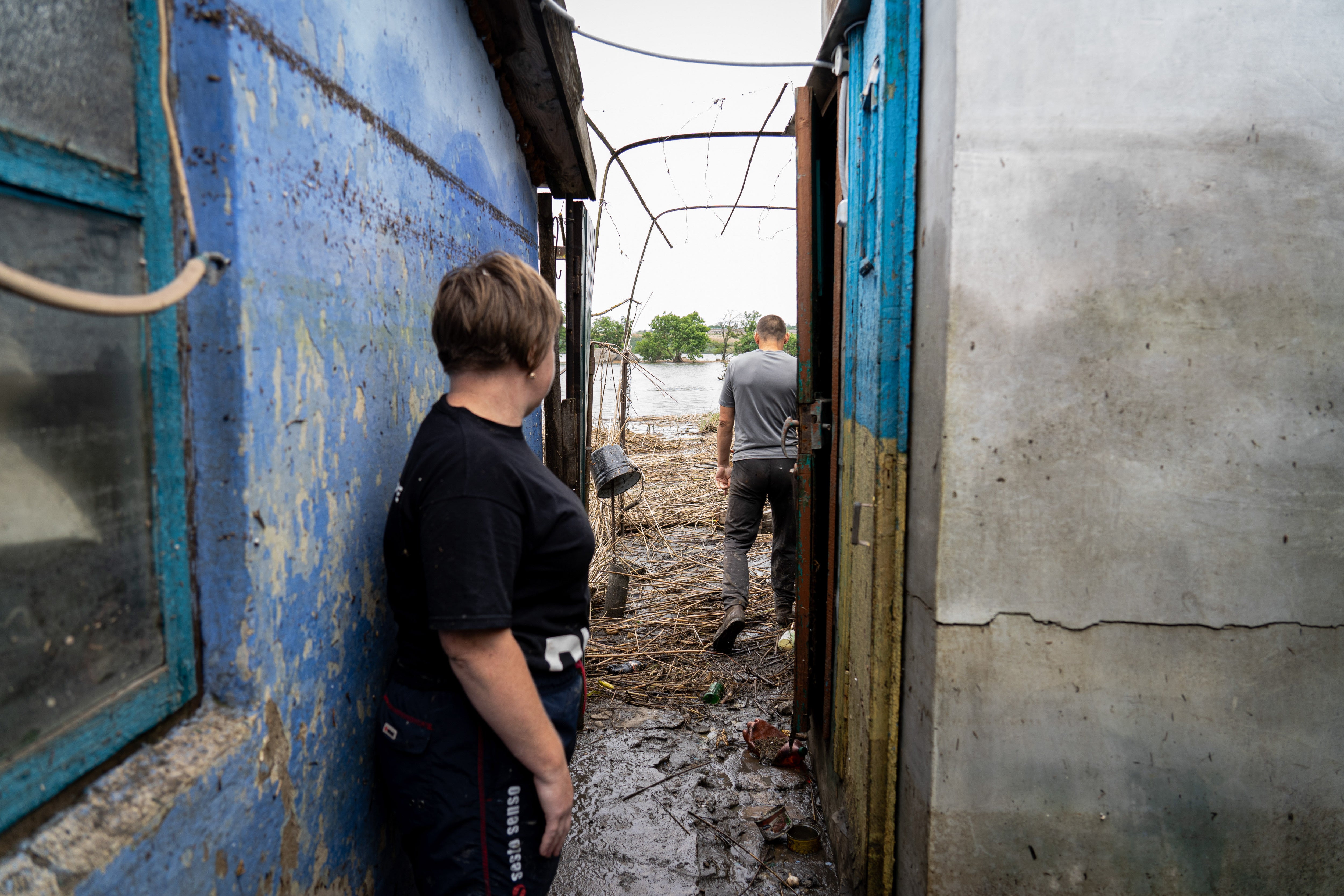
[ad_1]

In its war against Ukraine, Russia has sought to cripple the country’s critical infrastructure. It has attacked homes and hospitals, transportation networks and farmland, energy and civilian nuclear facilities, drinking water and wastewater systems, chemical and steel plants, mining facilities and vital seed banks.
The unprovoked war will pose humanitarian and environmental consequences long after the guns and missile launchers fall silent. Nowhere is this more evident than at the Nova Kakhovka Dam, which was destroyed several weeks ago.
The dam’s destruction has washed away vegetation, eroded riverbanks and contaminated drinking water sources with 150 tons of heavy fuel oil, in addition to polluted sediment and human and animal remains. The loss of the dam also threatens the water available to cool the reactors of the Zaporizhzhia nuclear power plant. Ukrainian officials have estimated overall damage resulting from the dam’s destruction will total more than £1.2 billion.
As the U.S. and other countries commit billions to help Ukraine rebuild, we must address the war’s environmental and health catastrophes when reconstruction efforts become possible, . The free world must also support Ukraine in building more resilient and sustainable cities and communities to improve the health of the people and the environment and to enable rapid recovery from natural and human-made disasters. There will be two critical priorities that will need to proceed in tandem. One is removing the detritus of war and safely returning Ukrainians to their homes. The other is rebuilding Ukraine’s infrastructure with modern, decentralized and nature-based systems.
But before the real recovery and reconstruction of Russian-occupied areas can take place, we will need to urgently remove land mines, which Ukrainian officials report have been swept up in floodwaters from the now unfettered Dnipro River and redeposited in new areas. This is in addition to the complicated and challenging tasks of disposing of unexploded ordnance and disabling improvised explosive devices. These explosive hazards not only kill and maim Ukraine’s civilians, but they also exacerbate food insecurity by keeping farmers away from farmland and impeding restoration of damaged agricultural storage and processing facilities.
By the end of this fiscal year, the U.S. will have committed more than $91.5 million in demining assistance to help the government of Ukraine address this urgent humanitarian challenge.
Ensuring the safe return of displaced people and a meaningful economic recovery for Ukraine will also require programs to clean up the environment and restore basic urban services, such as safe drinking water, functioning sanitation systems and the ability to properly manage solid waste. With 70 percent of Ukrainians living in urban settings, reconstruction of critical infrastructure such as hospitals, sanitation and water systems and energy grids, as well as schools and housing, will be vital. For example, some modern wastewater treatment facilities use anaerobic digestors to turn waste into methane. This generates electricity to power the treatment process and to feed into the electrical grid. These types of distributed facilities will also help decentralize power production away from a few main sources, which can be taken offline with missile strikes to key targets.
The U.S. is committed to helping Ukraine create more decentralized systems, including distributed and renewable energy generation, and incorporate nature-based solutions that combat pollution, clean the air and water, and mitigate floods and heat waves. Our own experience offers models for how this can happen. For example, in 2019 the Mississippi River Basin, which stretches across 31 U.S. states, experienced historic floods that caused more than $6 billion in damages. In the aftermath, to mitigate such floods in the future, mayors from more than 100 cities and towns worked closely with local and global environmental groups to begin to restore 66,000 acres of wetland areas, forests and marshes and to adapt the land to regulate stormwater flow, with an aim to build resilience for historically overlooked communities.
Once completed, these restored lands in the U.S. will capture more than 165,000 tons of carbon from the air. That is the equivalent of taking approximately 36,000 cars off the road every year. The efforts are also making cities and towns better protected against floods. When St. Louis, Mo., was hit with a “once-in-1,000-year rainfall” in 2022, the wetlands in the area absorbed enough stormwater to fill 750 Olympic-size swimming pools, saving millions of dollars in potential damages.
The world has rallied to support Ukraine with billions of dollars in humanitarian aid, security assistance and economic support since Russia’s full-scale invasion. This assistance has been critical to keeping Ukraine from succumbing to Russia’s aggression. So far the U.S. has provided more than $63 billion in security, economic and humanitarian assistance to Ukraine, in addition to more than $54 billion committed by the European Union. As large as these sums are, they are not nearly enough.
The Nova Kakhovka Dam was a critical part of the Ukrainian economy. It provided hydroelectric power, irrigation and river navigation to a population of more than one million people in the agriculture-based Kherson Oblast region of the country.
The explosion is the latest catastrophe that will “wreak environmental and economic devastation for many months and indeed many years to come,” said Secretary of State Antony Blinken in a June 21 press conference. As our efforts continue, the world must support Ukraine’s long-term goals to build modern and efficient infrastructure.
Remediating the environmental damage and destruction is a critical part of a meaningful and transformative recovery toward a sustainable and resilient future with greater levels of energy efficiency, lower levels of pollution and greenhouse gas emissions and healthier citizens.
This is an opinion and analysis article, and the views expressed by the author or authors are not necessarily those of Scientific American.
[ad_2]